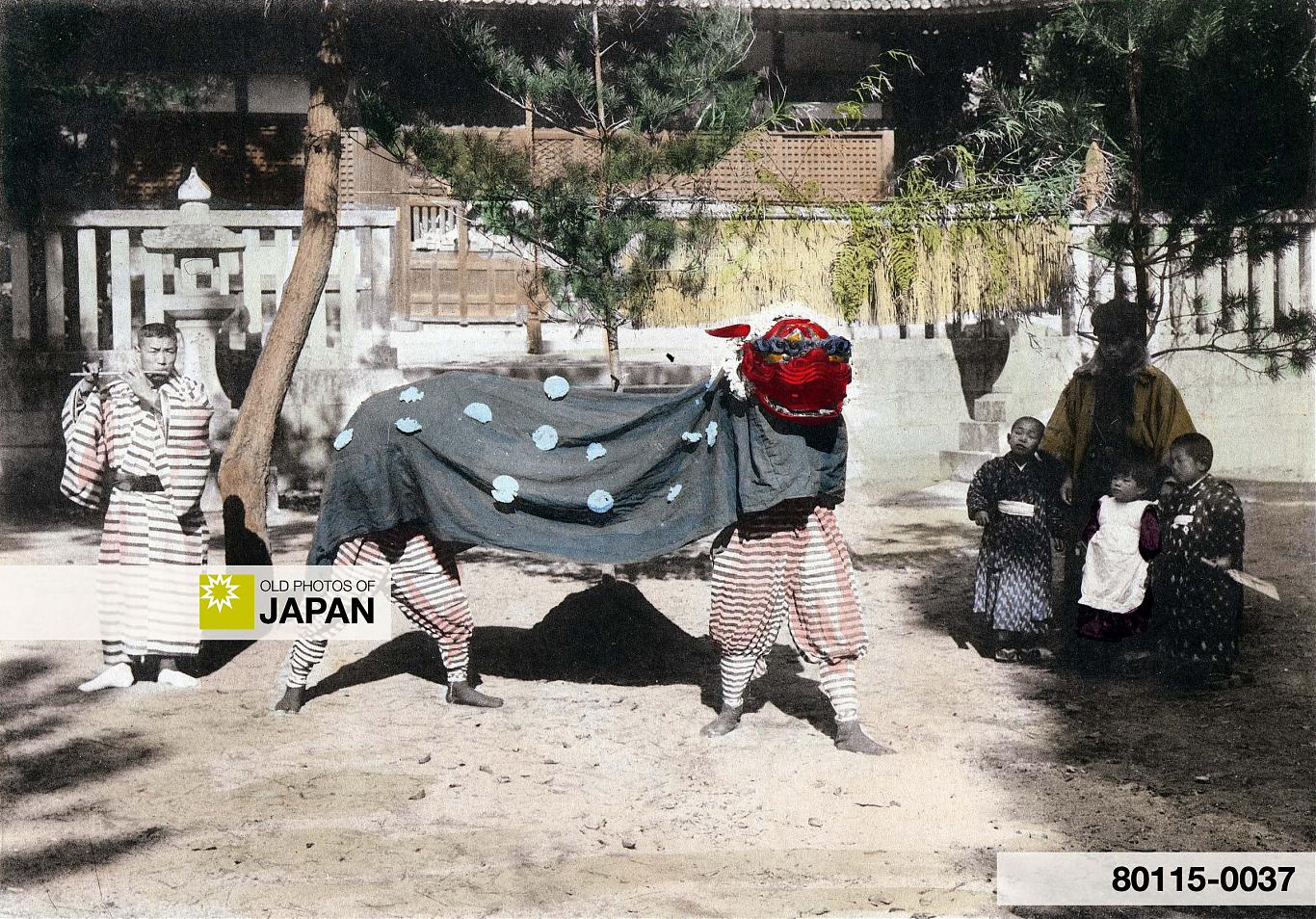Several men perform a shishi-mai lion dance in the courtyard of a shrine. The performers would also dance in front of the homes of the parishioners as a charm against evil spirits and disease, and to pray for good fortune.
Shishi-mai probably entered Japan around the 8th century after Japanese diplomats and priests encountered them in China. They are still performed today and it is believed that some 9,000 different variations of shishi-mai exist.
This image is part of The New Year in Japan, a book published by Kobe-based photographer Kozaburo Tamamura in 1906. Original text1:
To the accompaniment of a flute and a drum, the ‘lion dance,’ is being given; but the “lion” is a two-legged one, somewhat weaker than the “King of the forest.”
In this 2008 clip of a New Year’s lion dance at the Kanda Myoujin temple in Tokyo, the lion hands out tangerines using its mouth:
See all New Year images on Old Photos of Japan.
Notes
1 Tamamura, Kozaburo (1906). The New Year in Japan. Tamamura Shashinkan.
Published
Updated
Reader Supported
Old Photos of Japan aims to be your personal museum for Japan's visual heritage and to bring the experiences of everyday life in old Japan to you.
To enhance our understanding of Japanese culture and society I track down, acquire, archive, and research images of everyday life, and give them context.
I share what I have found for free on this site, without ads or selling your data.
Your support helps me to continue doing so, and ensures that this exceptional visual heritage will not be lost and forgotten.
Thank you,
Kjeld Duits
Reference for Citations
Duits, Kjeld (). Kobe, 1906: New Year Celebrations 13, OLD PHOTOS of JAPAN. Retrieved on November 27, 2025 (GMT) from https://www.oldphotosjapan.com/photos/670/new-year-celebrations-13




There are currently no comments on this article.